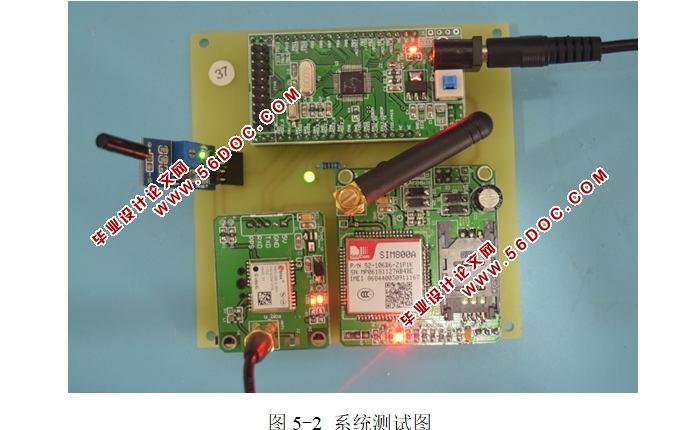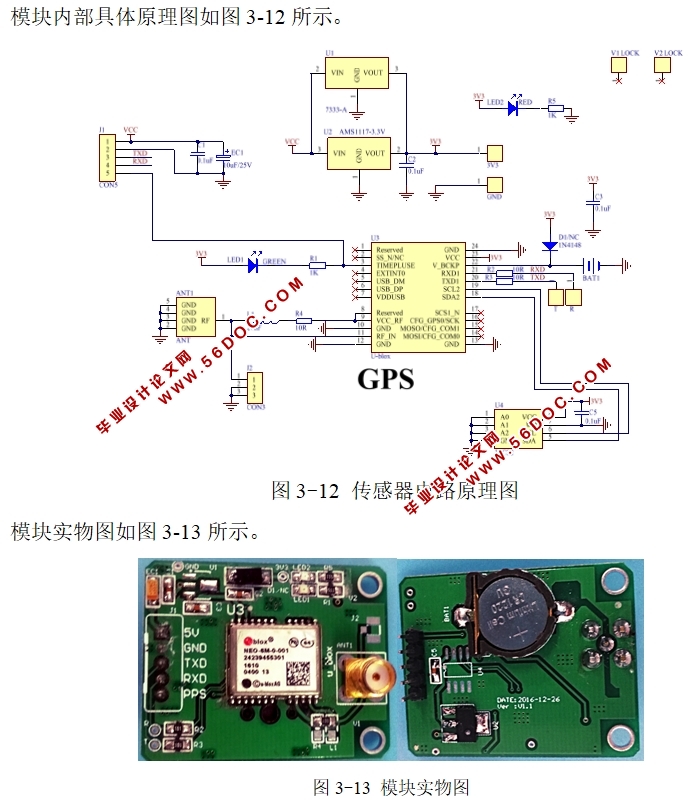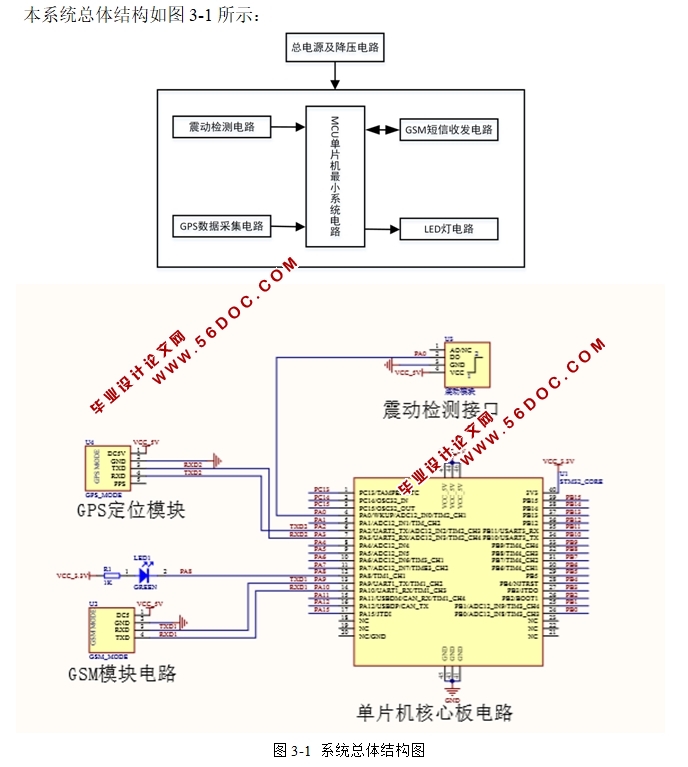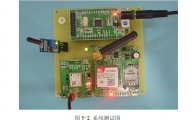基于GSM的车载防盗系统的设计
来源:56doc.com 资料编号:5D19113 资料等级:★★★★★ %E8%B5%84%E6%96%99%E7%BC%96%E5%8F%B7%EF%BC%9A5D19113
资料以网页介绍的为准,下载后不会有水印.资料仅供学习参考之用. 密 保 惠 帮助
资料介绍
基于GSM的车载防盗系统的设计(课题说明书,开题报告,中期检查表,论文9800字)
摘 要 电动车具有环保,快捷,方便的优良特点。随着电动车的普及,防盗问题越来越突出。为了很好地解决防盗问题,应用新技术对防盗系统的设计非常必要。 基于此,本文设计了一款智能电动车防盗报警系统。
本设计由STM32F103C8T6单片机核心板电路、GSM_SIM800A电路、震动传感器电路和GPS模块电路组成。统上电后,如果震动传感器检测到震动,则向特定手机发送经纬度信息短信。否则不发短信。设计具有滤除干扰功能,持续震动才会上报短信,震动阈值可以通过电位器调节。
关键词STM32单片机; GSM_SIM800A; GPS; 震动报警; 防盗
Design of Car-borne Anti-theft System Based on GSM
Abstract Electric vehicles are characterized by environmental protection, fast and convenient. With the popularity of electric vehicles, the problem of anti-theft has become more and more prominent. In order to solve the anti-theft problem well, the application of new technology is very necessary for the design of the anti-theft system. Based on this, this paper designed an intelligent electric vehicle anti-theft alarm system.
This design consists of STM32F103C8T6 microcontroller core board circuit, GSM_SIM800A circuit, vibration sensor circuit and GPS module circuit. After the power is turned on, if the vibration sensor detects the vibration, the latitude and longitude information message is sent to the specific mobile phone. Otherwise, no text messages will be sent. The design has a filtering interference function, and the continuous vibration will report the message, and the vibration threshold can be adjusted by the potentiometer.
Keywords STM32 single chip microcomputer; GSM_SIM800A; GPS; vibration alarm; anti-theft
3.1 系统的功能分析及体系结构设计
3.1.1 系统功能分析
本设计由STM32F103C8T6单片机核心板电路、GSM_SIM800A电路、震动传感器电路和GPS模块电路组成。
(1)启动系统,给系统通上电。当震动传感器检测到震动的时候,就会向特定手机发送经纬度信息短信,否则不发短信。
(2)设计具有滤除干扰功能,持续震动才会上报短信,震动阈值可以通过电位器调节。
(3)短信发送及初始化有状态指示灯指示。
(4)GSM模块是SIM800A,该模块和SIM900A电路程序完全兼容外观外形一模一样。



目 录
摘要及关键词 1
1 引言 1
1.1 课题研究的背景与意义 1
1.2 电动车报警器的现状 1
2 方案设计与论证 2
2.1 控制方案的确定 2
2.2 控制方式的选择 2
3 硬件电路的设计 3
3.1 系统的功能分析及体系结构设计 3
3.2 模块电路的设计 5
4 系统软件设计 12
4.1 编程语言选择 12
4.2 单片机程序开发环境 12
4.3 系统主控模块 12
4.4 GSM模块 12
4.5 程序流程图 14
5 系统焊接与调试 14
5.1 电路焊接 14
5.2 系统调试 15
5.3 实物测试 16
6 总结与展望 17
6.1 总结 17
6.2 展望 18
参考文献 18
致谢 20
|







